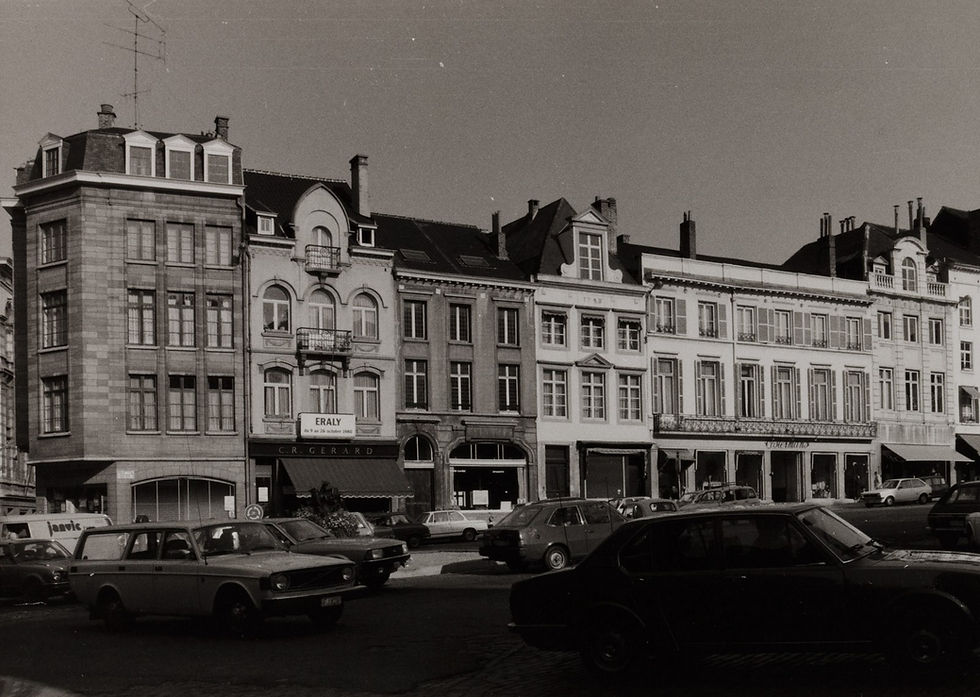
Our
Neighbourhood
Welcome to the Sablon - The vibrant heart of Brussels, between history, elegance and the art of living
Between the elegant heights of the city and the popular soul of the Marolles, Sablon embodies the most vibrant and timeless aspects of Brussels. It is a neighbourhood apart, with history around every corner. On one side, the Grand Sablon: a lively, iconic square known for its antiques market, cosy terraces, galleries, artisans and exceptional food and drink. On the other side, the Small Sablon: a jewel of a garden, lined with statues and goldsmith gates, perfect for an inspiring break overlooking the majestic Church of Our Lady of Victories. Here, the past meets the present with elegance. You will discover a sophisticated yet relaxed way of life here, from top gastronomy to more laid-back eateries. A stone's throw away: the Royal Palace, the Place Royale emblematic museums such as the Magritte and the Museum of Fine Arts, and a little further away, the Marolles and its raw energy, the Place du Jeu de Balle, and the eclectic vintage boutiques of Rue Blaes and Rue Haute. Sablon is chic without being stuffy, cultural without being elitist, full of character but always welcoming. It is a neighbourhood to experience, to explore, to feel.
Secrets & Legends of the Sablon
Whispers beneath the cobblestones...
Beneath the elegant façades and picturesque squares of the Sablon, an intriguing legend stirs the imagination: the existence of underground corridors, said to date back to the time of the Spanish Inquisition. These hidden passageways, according to local lore, connected the Sablon to the Grand-Place — used as secret escape routes by those fleeing persecution.
While there is no definitive archaeological proof of such tunnels being used by victims of the Inquisition, it’s true that the Sablon and its surrounding areas are riddled with mysterious underground structures — ancient cellars, crypts, and service passages, many of them centuries old. Some are remnants of noble estates or religious institutions, others remain unexplored and unexplained.
Fact or fiction? Perhaps a bit of both. But like any great historic quarter, the Sablon guards its secrets well — inviting you to wander, wonder, and maybe... uncover a piece of the mystery yourself.


19th Century
Transformation into a refined bourgeois district. Antique dealers, chocolatiers and intellectual salons begin to shape the Sablon’s unique identity.
20th Century
The Sablon emerges as a centre for antiques and fine art. Galleries, design shops and renowned chocolatiers solidify its prestige.
Today
A vibrant, elegant and welcoming neighbourhood where heritage meets modern life. A destination for lovers of beauty, taste and culture.
The history
The Sablon Through Time
A journey through centuries of elegance, culture, and transformation.
13th Century
The Sablon is a sandy, marshy area outside the city walls — used by crossbowmen for training and religious gatherings.
15th Century
The Church of Our Lady of the Sablon is built, becoming a spiritual and architectural landmark. Nobility begins to settle around the square.
17th Century
The Sablon flourishes with the rise of powerful guilds and artisan families. It becomes a cultural and commercial hub of Brussels.

The map
Access
Public transport
Tram


Stop Petit Sablon
Bus





Stops Petit Sablon or Grand Sablon
Metro


Gare Centrale station


Louise station
Train
Gare Centrale: about 10 minutes' walk
Gare du Midi: accessible by tram or bus (15 to 20 minutes)
Nearby public car parks
Interparking Sablon-Poelaert (Rue des Sols 3 / Stuiversstraat)
Direct access to the top of the Sablon, next to the Palais de Justice.
Interparking Grand Sablon (Place du Grand Sablon)
Ideally located right in the heart of the district.
Parking Louise (Avenue de la Toison d'Or)
Just a few minutes' walk away, perfect for combining shopping with a visit to the Sablon.
Pedestrian and cycle access
The district is within easy walking distance of the city centre, particularly via Rue de la Régence and Montagne de la Cour.
Several Villo! stations (shared bikes) are available around the Sablon.
Secure cycle zones all around the district.
